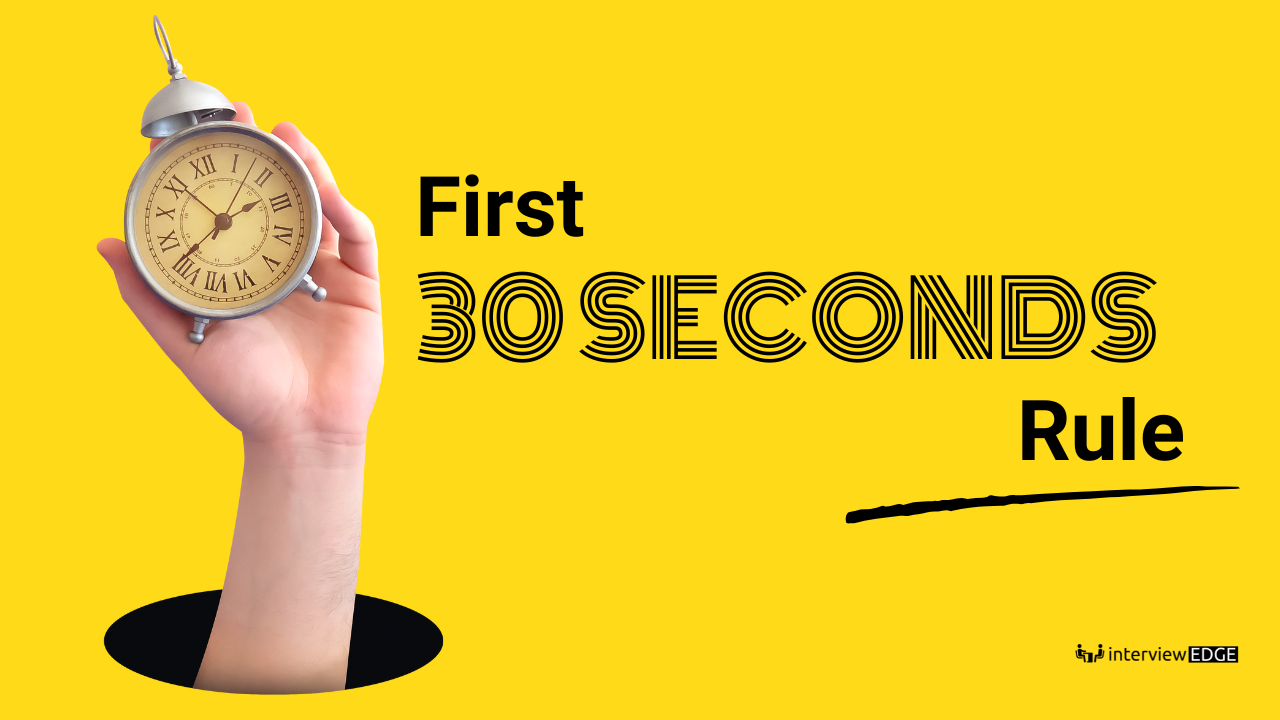
They say, “First impressions matter.” But do they really? Can an interviewer decide your fate within the first 30 seconds of meeting you? The truth is—YES, to a large extent.
Interviewers are human, and humans make snap judgments based on first impressions. The way you walk into the room, your handshake (if applicable), your facial expression, and even the way you say “Good morning” can set the tone for the rest of the interview. While your answers and skills still matter, those first moments create an impression that can be difficult to change.
Why Do First Impressions Matter So Much?
First impressions are crucial because they shape how an interviewer perceives you. Through confirmation bias, they tend to look for evidence that supports their initial view of you, whether positive or negative. The halo effect means that one positive trait, like confidence, can influence the perception of your other qualities, such as competence. Lastly, making an emotional connection by appearing approachable and positive helps the interviewer feel more comfortable, creating a smoother and more engaging conversation. Together, these factors can significantly impact the overall impression you leave.
What Happens in the First 30 Seconds?
Your Entry & Body Language
When you walk into the room, it’s important to have good posture—shoulders back, head held high. This instantly communicates confidence. Imagine entering the room with a hesitant posture, eyes darting nervously. The interviewer might think, “This person looks a bit nervous.” But, if you walk in confidently with a calm, purposeful stride, the interviewer is more likely to think, “This person seems self-assured.” It’s all about making a strong first impression without trying too hard. Also, maintaining natural eye contact shows you’re engaged and ready for the conversation. When offering a handshake, ensure it’s firm but not overpowering—this strikes the right balance of confidence and professionalism.
Your Facial Expressions & Energy
Your facial expression can make a huge difference. A warm, genuine smile is one of the easiest ways to show you’re approachable and friendly. Don’t force excitement—just let it come naturally. Imagine you’re walking into the interview, and you greet the panel with a relaxed smile, showing you’re comfortable and ready to engage. The energy you bring should feel genuine—if you try too hard to seem overly excited, it might come across as fake. A calm and friendly demeanor communicates the right level of enthusiasm.
Your Greeting & Tone of Voice
When you greet the interviewer, a simple “Good morning, it’s great to meet you” sets the tone for the rest of the conversation. Keep it clear and well-paced, not rushed. A rushed greeting can make you seem nervous, whereas a calm and collected greeting sets the stage for a confident conversation. It’s also important to show interest right from the start, not just with your words but with your tone and body language. If you speak with a clear, friendly tone, you’ll immediately make a positive impression.
Can a Bad First Impression Be Fixed?
Yes, a bad first impression can be fixed, but it’s much harder. If you start off on the wrong foot—perhaps due to nerves or an awkward moment—it’s important to stay composed and not let one mistake shake your confidence. Focus on delivering strong, well-structured answers that demonstrate your knowledge and skills, which can help shift the interviewer’s attention from any early missteps. Additionally, engaging naturally by showing curiosity, asking insightful questions, and maintaining positive energy throughout the conversation can help you recover and make a more lasting, positive impression.
For more strategies on making conversations smooth and impactful, read our post on interview techniques: Mastering the Art of Interview Conversations – How FORD, TED, OARS & PEARL Can Give You an Edge.
Summing Up
The first 30 seconds won’t determine everything, but they do hold significant weight. A strong start puts you in a better position to impress the interviewer with your skills and experience. So, before stepping into that interview room, take a deep breath, walk in with confidence, and let your presence do the talking.
For in-depth strategies and expert insights, explore our interview preparation resources tailored to different roles and industries.
For more interview techniques that can help you excel, check out these guides:
- The STAR Method: Your Step-by-Step Guide to Acing Behavioural Interviews (Interview Techniques – Part 1)
- How to Tackle Behavioural Interviews with STAR, CAR, SOAR, and More (Interview Techniques – Part 2)
- How to Answer Tough Interview Questions Using the Hypothetical, Competency-Based & 5 Whys Techniques (Interview Techniques – Part 3)
Happy interviewing.
